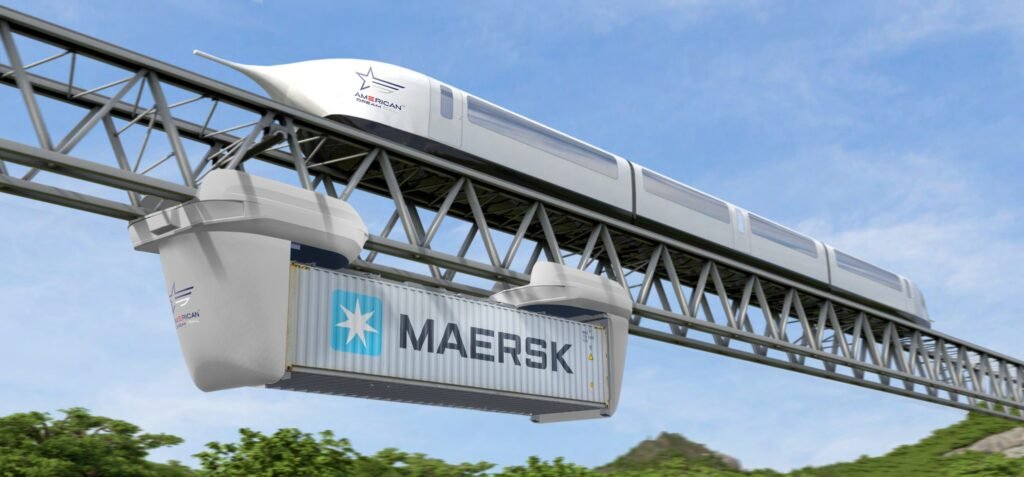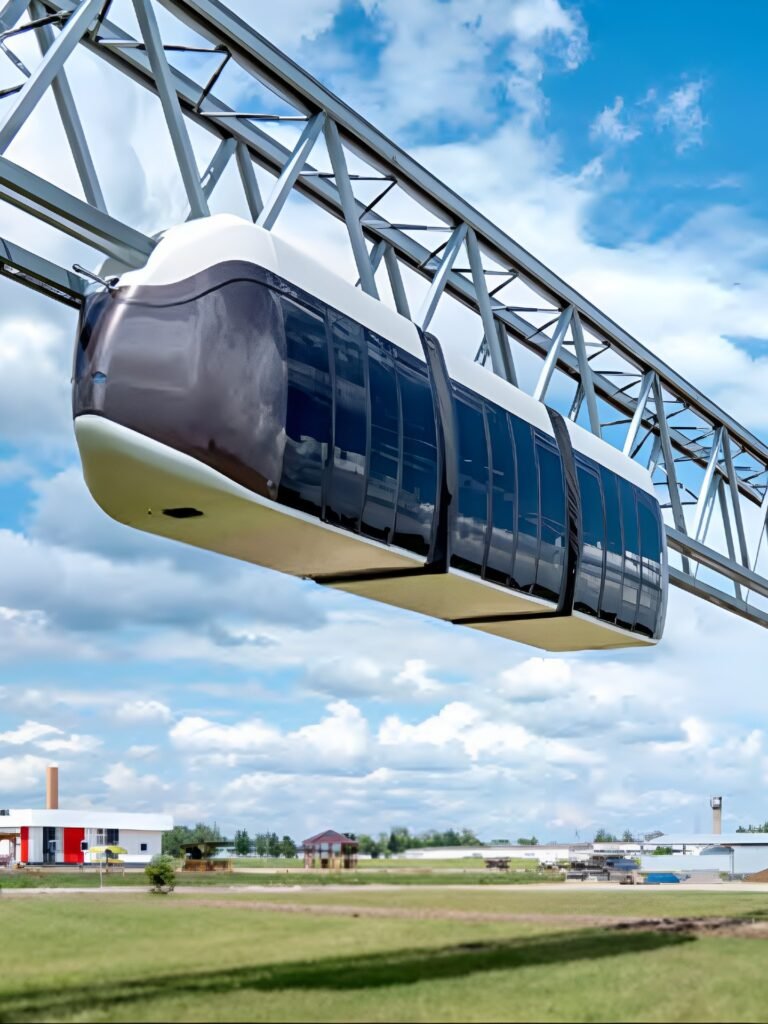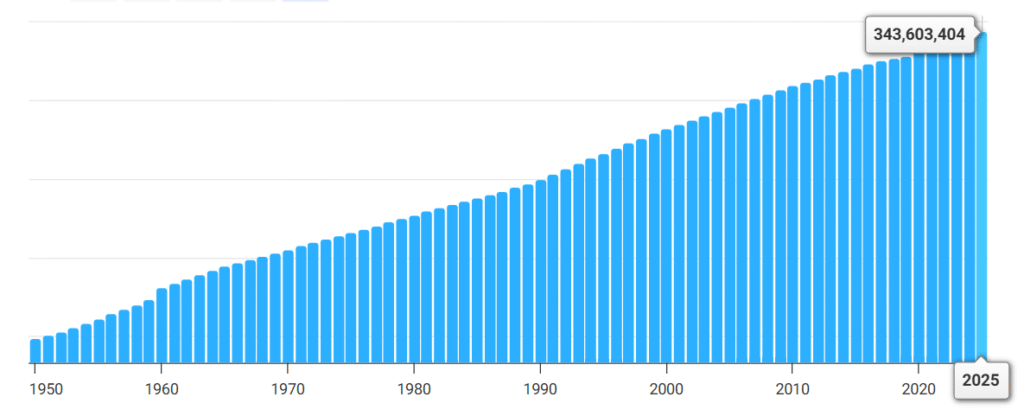America, the land of opportunity, is teetering on the edge of a precipice. Once a beacon of hope where hard work promised prosperity, our nation now grapples with a towering mountain of interconnected crises, economic hardships, social fractures, political gridlock, and financial instability, that threaten to bury us all. Families are struggling, communities are divided, and the very fabric of our society is unraveling. At the heart of this turmoil is the effective death of the American Dream for as many as 87% of hardworking Americans, a staggering 149 million people based on the U.S. Bureau of Labor Statistics’ August 2025 civilian labor force figures. This isn’t just a statistic; it’s a human tragedy, fueled by the root cause of zero discretionary income, the money left after essentials that allows for savings, investments, and upward mobility. But amid this darkness, there’s a transformative solution: President Trump adopting the American Dream Rail Legacy Project and integrating its Nine-Point Legacy Plan into his MAGA agenda. The largest legacy project in the world, lasting 25 years, which President Trump can spend the next three years laying the foundation and launching its start. When adopted and implemented by President Trump, it will depolarize the USA, unite Americans, and restore the opportunity for 87% of hardworking Americans to live the American Dream.
In this article, we’ll explore the depth of America’s troubles, why the American Dream has faded for most, and how the Dream Rail Legacy Project’s innovative infrastructure and Nine-Point Plan offer a path forward. Drawing on recent data and expert insights as of September 24, 2025, we’ll see how this project addresses not just economic woes but also the looming population boom in cities, a massive challenge projected to strain resources further. Think of it as a 21st-century evolution of President Eisenhower’s Interstate Highway System, but bigger, bolder, and lasting 25 years. President Trump could lay the foundation in his next three years, launching the largest legacy project in the world. We’ll also highlight the American First approach, which complements President Trump’s America First by prioritizing citizen enrichment above corporate and foreign interests, ensuring workers benefit directly from prosperity. Let’s dive in and uncover why this isn’t just a plan, it’s a lifeline.
The Mountain of Problems: Why America is in BIG Trouble

America’s challenges aren’t isolated incidents; they’re a colossal, interconnected “mountain” that’s draining our resources, stifling growth, and dividing our people. From economic inequality to political dysfunction, these issues create a vicious cycle that makes daily life a grind for millions. Recent surveys paint a grim picture: As of 2025, 58% of Americans say their finances are in crisis, with 33% struggling or in crisis mode and 52% living paycheck-to-paycheck. Inflation, high interest rates, and rising prices have forced 73% to save less for emergencies, leaving nearly one-third without any financial safety net. This isn’t abstract—it’s families skipping medical care, cutting retirement contributions, and facing constant anxiety over bills.
Let’s break down the key components of this mountain, rooted in data from 2025 reports:
- Economic Crises: Sixteen devastating issues crush daily life, including housing affordability (median home prices at $422,400, with 70% of low-income renters cost-burdened), healthcare gaps (profit-driven systems without universal coverage), and debt burdens (student loans at $1.65 trillion, credit card reliance due to stagnant wages). Hunger affects 30% of workers earning less than $15/hour, while childcare and mental health crises burden families, reducing productivity and perpetuating poverty.
- Social Division: Polarization across political, cultural, and economic lines has created an “us vs. them” mentality. Top causes include extreme party positions (voters seeing opponents as threats), media echo chambers amplifying misinformation, and economic inequality fueling class resentment. Urban-rural divides, education disparities (college vs. non-college views), racial tensions, and social media algorithms boosting outrage have eroded trust in institutions, with 80% of Americans perceiving deep divisions on core values.

- Political Dysfunction: Decades of failures, cronyism, and lobbying (a multi-billion-dollar industry dominated by pharmaceuticals at $374 million and oil/gas at $153 million) prioritize special interests over citizens. This gridlock blocks reforms on infrastructure, energy, and housing, perpetuating quid pro quo that favors the wealthy and leaves workers behind.
- Financial Unsustainability: A teetering system with $100–222 trillion in unfunded liabilities (Social Security at $62.8 trillion, Medicare at $106.6 trillion) risks inflation, defaults, or hyperinflation. Wealth inequality and dependence on dollar dominance threaten stability, burdening future generations with austerity or debt monetization. As of September 2025, the national debt stands at approximately $37.3 trillion, highlighting the urgency.
These problems interlock: Economic strain breeds social resentment, which fuels political extremism, exacerbating financial risks. As Pew Research notes, a growing share of adults (majority in 2025 surveys) say their finances will worsen in the next year, with 60% making tough choices to navigate life. This mountain isn’t just high. It’s growing, driven by root causes like declining unions, automation, zoning barriers, and underfunded services. The result? A nation where optimism is fading, and protests over issues like funding cuts and deportations highlight deepening divide.
The American Dream is Effectively Dead for 87% of Hardworking Americans

At the core of America’s troubles is the erosion of the American Dream; the promise that hard work leads to financial security, homeownership, family stability, and a better future. For 87% of hardworking Americans, 149 million people in the 171 million-strong labor force, this dream is effectively dead, unattainable due to systemic barriers. Recent 2025 polls underscore this:
- Nearly 70% believe the American Dream doesn’t hold true or never did, a record low in
optimism, with only 31% thinking hard work guarantees success. - Another 41% say it was once possible but no longer is.
- While 24% disagree it’s achievable at all.
Why? The root cause is no discretionary income: the money left after essentials for savings, investments, or luxuries. Discretionary income is the engine of the American Dream; without it, upward mobility stalls. In 2025, 73% of Americans can’t afford beyond basics, with 52-78% living paycheck-to-paycheck and 90% setting financial goals amid anxiety. Inflation and high costs devour earnings: Family getaways, once a dream staple, are now non-negotiable luxuries for only 71% in surveys, while essentials like housing ($422,400 median prices) require dual high incomes. Student debt ($1.65 trillion) consumes 10-20% of early income, and 69% fear insufficient retirement savings.

This lack of discretionary income manifests in chronic stress: 97% experience financial strain, with 71% at moderate to extreme levels, leading to skipped medical care (46%) and cut contributions (33%). It’s a feedback loop, stagnant real wages (barely grown since 1970s) and inequality (Gini ~0.42, top 1% holding 30%+ assets) trap workers, reducing intergenerational mobility to 50% out-earning parents (down from 90% in 1940s). X posts reflect public sentiment: “The American Dream as I knew it growing up is dead” and “The American Dream is now on chain… the nuclear family is gone” capture the despair.
The consequences are devastating: Rising depression (18.3% rate in 2025, projecting 47.8 million cases) and suicides (up 37% since 2000, 14.7 per 100,000 in 2024) stem from this futility, with “humiliation and shame” from a “rigged” system as triggers. Economic hardship correlates with higher suicide risk, as financial distress and unemployment exacerbate despair. For 87%, hard work yields survival, not prosperity, burying the Dream under debt, inequality, and eroded opportunities.
The Root Cause: No Discretionary Income and Its Ripple Effects

Discretionary income isn’t just “extra cash”. It’s the key to the American Dream, enabling investments, homeownership, and family planning. In 2025, its absence is the root cause of the Dream’s death, as high living costs outpace income growth. Consumers using the 50-30-20 budget (50% essentials, 30% discretionary, 20% savings) struggle: Essentials consume 60-70% for many, leaving nothing for the rest. This shrinkage, exacerbated by job losses, pay cuts, and inflation, means less spending on luxuries, vacations, or education, stalling mobility.
Ripple effects are profound: Renters with exorbitant payments have less to spend, businesses can’t recruit, and young adults delay families (married/home by 30 at 12% in 2025 vs. 50% in 1950). Government policies, like taxpayer-funded loan guarantees, have condemned workers to lifelong debt, funneling wealth to banks while eroding discretionary power. Television and consumerism have amplified this, turning needs into insatiable demands that drain incomes.
Without discretionary income, the Dream crumbles: No savings for emergencies (one-third have none), no investments for wealth-building, and no buffer against crises like healthcare or housing. This perpetuates inequality, with tax policies favoring the wealthy and automation suppressing wages, leaving 30% in poverty or near-poverty. Addressing this root cause is essential, enter the American Dream Rail Legacy Project.
The American Dream Rail Legacy Project: A Transformative Solution

Imagine a project that flattens America’s mountain of problems, revives discretionary income, and restores the Dream for 149 million struggling workers. The $5.5 trillion American Dream Rail Legacy Project is that vision: A low-cost, eco-friendly, all-electric intercontinental transportation system for high-speed passenger and freight movement, suspended above highways on over 27,000 miles of rigid steel tracks. This revolutionary network would move 50,000 passengers per hour and 60,000 pounds of freight per trailer, unclogging roads, slashing emissions by 124 million metric tons, and attracting foreign investment [48]. But it’s more than rail. It’s a foundation for economic rebirth, including the construction of 10 new linear Dream cities as part of the initiative. These linear Dream cities: compact, sustainable urban corridors aligned along the elevated rail network would be built to foster economic growth, provide affordable housing, and accommodate population surges in a resource-efficient manner. Designed with modular, eco-friendly architecture, they would connect via the all-electric high-speed rail system, promoting walkable communities, green spaces, and integrated job hubs to bridge urban-rural divides and support up to millions in new residents without exacerbating sprawl or environmental strain.

Importantly, the project does not add to the existing national debt nor adversely impact the federal budget. Instead, it is structured as a self-sustaining investment, funded through innovative mechanisms that leverage future small and medium enterprise (SME) profits and private-sector growth, ensuring deflationary benefits by lowering long-term costs in logistics, energy, and operations (e.g., 2-7x efficiency gains over traditional roads). It is treated as a debt owed by American citizens collectively, essentially a shared national obligation repaid through the project’s generated revenues, such as dual passenger-freight income, electronic coin trade value, and IPA profits, without imposing new taxes or borrowing from Treasury funds. This approach relies on the approval of Congress for legislative authorization and the creation of special “Anniversary Dollars,” a proprietary currency or funding instrument tied to the project’s milestones and economic outputs, to achieve it. These Anniversary Dollars would facilitate initial capital without inflating the debt, positioning the initiative as a citizen-backed legacy that aligns with fiscal responsibility while delivering transformative returns.
Transformative features of the Nine-Point Legacy Plan: Employs a multifaceted approach to boosting and maximizing household discretionary income, including supplementing ordinary earnings, minimizing debt interest and monthly living expenses, ensuring prudent debt management, and generating investment income through acquiring and renewing multiple node licenses for income-producing assets with above-average returns. Provides hardworking Americans direct access to industry profits, up to $5.5 trillion every year, to supplement their ordinary income by owning node licenses to income-producing assets. Offers a transformative infrastructure initiative: a low-cost, eco-friendly, all-electric intercontinental transportation system for high-speed passenger and freight movement. Suspended above highways on over 27,000 miles of rigid steel tracks. Perfectly meet the growing needs of future population booms expected in many cities and improve the increased demand to move more people and freight. It’s a next century version of the interstate system built by President Eisenhower. Construct 10 new linear Dream cities to drive economic growth, accommodate population surges, and promote sustainable living. Circulate a native electronic coin, accepted by trucking companies, to capture the trade value with shipping firms, literally, creating new money to repay bond holders and help pay down the national debt.
This plan embodies the American First approach, which complements President Trump’s America First by prioritizing citizen enrichment above corporate and foreign interests, ensuring workers benefit directly from prosperity while maintaining national strength. The project modernizes trucking with blockchain, electric vehicles, AI, and driverless tech, addressing 90% turnover and supply chain lags. Self-funded via SME profits and Anniversary Dollars, it avoids debt spikes, making it feasible and sustainable.
Addressing the Population Boom: A Viable Solution for Overcrowded Cities

America faces a massive population boom in cities, a problem that could overwhelm infrastructure and exacerbate crises. Projections show the U.S. population growing from 331 million in 2020 to 349 million in 2030 and 371 million in 2050, with 89% urban by 2050 (up from 83%). Globally, 68% of the world will be urban by 2050, adding pressure as migration and birth rates surge. Cities like Princeton, Texas (30.6% growth) and Celina, Texas (16.41%) are exploding, straining housing, transport, and resources. Without action, this leads to higher costs, congestion, and inequality, further killing the Dream.
The Rail Legacy Project counters this with its ten new linear Dream cities: Efficient, rail-linked urban hubs designed for sustainable living, accommodating surges without sprawl. Suspended tracks minimize land use (50-100 year lifespan), while eco-friendly operations promote green growth. This disperses population pressure from megacities, creating affordable housing and jobs in new corridors, echoing how urban planning can handle booms, as seen in projections for 7 billion urban dwellers by 2050. It’s a proactive fix, preventing the “devastatingly bleak” stats like 12% married/home by 30 in 2025.
A Next-Century Interstate: The Largest Legacy Project in the World

This isn’t just infrastructure. It’s the largest legacy project globally, a 25-year endeavor rivaling President Eisenhower’s Interstate Highway System, which transformed America in the 1950s by boosting commerce, jobs, and unity. Eisenhower’s system connected a post-war nation; the Rail Project does the same for a polarized, 21st-century America, but with zero-emission tech, dual passenger-freight revenue, and wealth distribution.
Lasting 25 years, President Trump could spend his next three years laying the foundation, securing Congress approval, creating Anniversary Dollars, breaking ground, and launching phases. This positions it as a MAGA extension, addressing his plan’s gaps (e.g., insufficient $1T infrastructure, premature reindustrialization) while attracting global firms to a thriving economy. Like Eisenhower’s legacy, it would endure, becoming the “8th wonder of the world” and uniting generations.
How Adoption by President Trump Will Depolarize, Unite, and Restore the Dream

If President Trump adopts and implements this project, it could depolarize America by countering key causes: Economic inequality (via jobs/wealth-building), media fragmentation (positive shared narratives), educational/cultural divides (vocational/rural uplift), electoral incentives (bipartisan wins), and trust decline (citizen focus). Studies show large infrastructure reduces polarization by fostering connectivity and prosperity, as Europe’s rail networks have done. Trump’s framing could build coalitions, with polls showing support for rail despite debates.
Uniting Americans: By enriching all, regardless of politics or geography, it bridges urban-rural gaps, reduces resentment, and creates a “superordinate” identity around progress. For 87%, it restores the
Dream: Boosting discretionary income ends paycheck stress, enabling homeownership (via subsidies), mobility (high-wage jobs), and security (debt reduction, IPA returns). Evidence links such uplift to lower despair, depression (18.3% rate in 2025), and suicides.
This isn’t pie-in-the-sky. It’s proven: Infrastructure booms depolarize by creating winners everywhere, and the project’s deflationary, self-funding model avoids gridlock. Trump could make it his legacy, flattening the mountain and making America unstoppable.
Call to Action: Your Role in Reviving America

Don’t wait for politicians, Act now for your future.
- Get Informed: Visit americandreamrail.org to learn about the project and nine-point plan.
- Schedule a Meeting to Get Involved: Contact American Patriots, Inc. at +1 (305) 000-0000 or contact@AmericanDreamRail.com to join the movement.
- Sign the Petition: Unite for American First. Sign at the site today, for your sake more than Trump’s.
Together, we can restore the Dream. America’s best days are ahead, if we build them.





